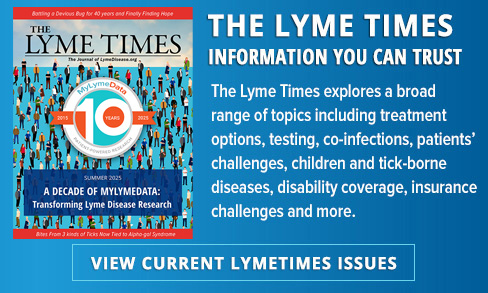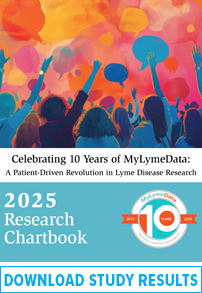Using MyLymeData, researchers seek to define the reality of neurological Lyme

by Emily Dodd, The College of New Jersey
TCNJ math professor Jana Gevertz is helping to lead a federally funded effort to better understand chronic Lyme disease, particularly how it affects the brain and nervous system.
Gevertz is contributing her expertise in computational biomedicine to a multi-institutional study funded by the U.S. Department of Defense.
The project, a collaboration between researchers at TCNJ, UCLA, and MyLymeData (a project of LymeDisease.org) focuses on patients with persistent Lyme disease.
These include those who continue to suffer symptoms long after initial treatment or those who never received a diagnosis and treatment during the acute stages of the disease.
The study’s goal is to identify and define the phenotypic characteristics (observable traits or symptom patterns) of people who develop neurological forms of the disease.
“Before you can effectively study or treat a subgroup of patients, you need to define who they are,” Gevertz says. “Right now, ‘chronic Lyme’ is an umbrella term. One of our key goals is to better define what persistent neurological Lyme actually looks like across the patient population.”
Poorly understood symptoms
Phenotypic characteristics might include specific symptoms such as brain fog, memory loss, headaches, difficulty concentrating, sleep disturbances, sensory sensitivity, or issues with motor control. These are all symptoms that are commonly reported by patients, but are poorly understood and/or inconsistently acknowledged in medical literature.
“These are symptoms patients live with every day, but without a formal framework, doctors may dismiss them or treat them generically,” Gevertz explains. “By identifying consistent symptom patterns, we can begin to group patients in meaningful ways, and that’s the first step toward better diagnosis and more targeted treatments.”
Using machine learning tools and statistical methods, Gevertz is helping the team analyze a vast patient-reported data set from MyLymeData.
Unlike many previous studies that relied on restrictive enrollment criteria, such as requiring a traditional bull’s-eye rash or a positive CDC-standard blood test, this data reflects a wider range of clinically-diagnosed patients suffering with the disease.
Comprehensive picture of lived experience
“Those older criteria exclude up to 90% of actual patients,” Gevertz says. “This study uses self-reported data, which isn’t perfect, but it’s the most comprehensive picture we have of people actually living with the disease.”
Gevertz, who battled chronic Lyme herself for over a decade, describes her role as a “translator” between the mathematical and medical sides of the project. In addition to helping shape the research questions, she’s currently mentoring undergraduate students housed at UCLA for the summer working on the computational side of the analysis, and plans to involve TCNJ students starting next summer.
The Department of Defense’s interest in the research stems from rising rates of tick-borne illnesses among military personnel.
“It’s become a readiness issue,” Gevertz explains. “But the implications of this work extend far beyond the military.”
In the long term, the research team hopes to uncover patterns that could inform more personalized treatments, similar to how cancer care is tailored based on a patient’s specific tumor characteristics. For now, Gevertz sees the work as a step toward validation for a long-overlooked patient population.
“These patients have been dismissed and told there is ‘nothing wrong with them.’ But they’re sick, and they deserve answers,” she says. “This research is about helping make that happen.”
SOURCE: The College of New Jersey
See also: UCLA study uses MyLymeData and machine learning to decode neuro-Lyme




















We invite you to comment on our Facebook page.
Visit LymeDisease.org Facebook Page